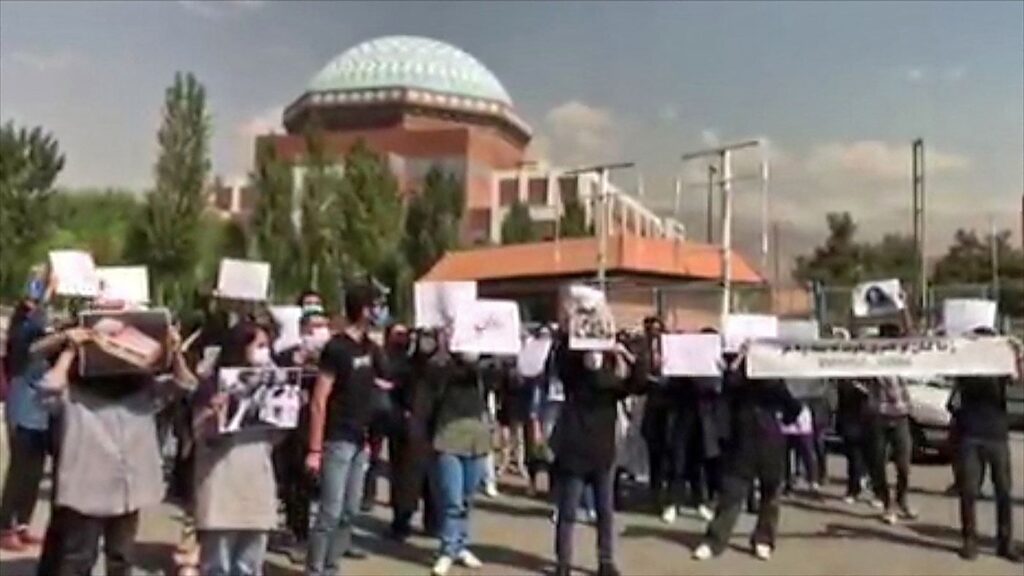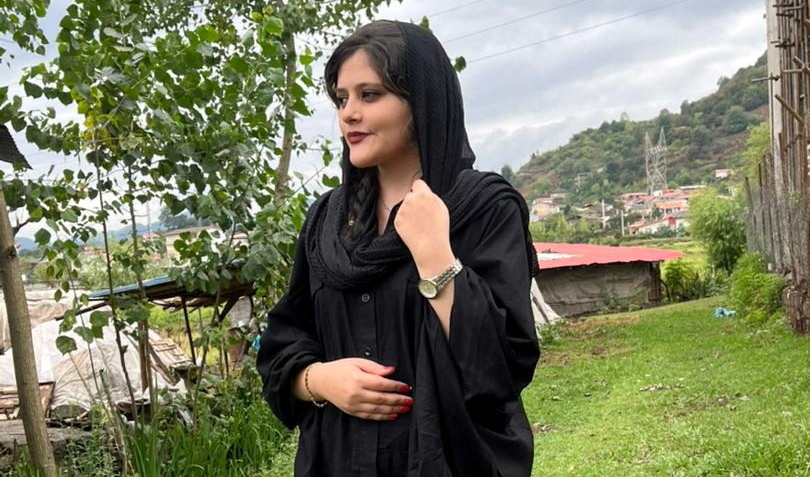Mahsa Amini
2000-2022
By – Nicolas Garon
Iran, a country with phenomenal and courteous people, is ruled by a tyrannical and bloodthirsty regime, one accused of propagating religion/religious law to extort power over its people. The same regime frequently throws human decency, women’s rights, and the very legitimacy and credibility of its own constitution into the trash can.
In August of 2022, I covered, in a human rights article, how Iranian authorities abducted Sepideh Rashno over a verbal discourse on a bus regarding the hijab law. Later, the State-Media of Iran released a video of 28-year-old Rashno, whose whereabouts were unknown prior to. With a pale face, she appeared to be coerced into confession by her comments, those which counter the ideals of the regime. The case highlighted the continuous anti-hijab protests and the desire for women to have a choice about how they display their religiosity in the region. Less than a month later, a 22-year-old Kurdish girl, Mahsa Amini was wearing a headscarf, but too much hair was showing. She was arrested by the religious police in Tehran and beaten so badly that she became brain dead.
As she lay intubated in her hospital room, the international news coverage was very slim. A few days later, she passed away. The country erupted with anger, while American and European news agencies exploded with coverage. Many of the most impactfully gruesome videos were uploaded to Instagram by Iranian Instagram channel @1500tasvir.
I covered the protests of Iran in 2019, which stemmed from a multitude of governmental policy dissents. The protests occurred in tandem with the protesting of Lebanon, Iraq, and Colombia. The protests were all regarding unique domestic issues and were not directly related. In Lebanon, protestors and images of massive riots caused massive oversight and resignations of high-level officials. The world watched and took notice, which pushed Lebanon’s government into change. Iran was steadfast in not allowing the world to see the massive dissent and disagreement of its people. As Iranians took to the streets, the government shut the entire nation’s internet down from 16-23 of November 2019.
The regime suppressed the voices of its citizens.
Texting or emailing loved ones was made impossible.
Reuters reported that 1,500 people linked to the protest were killed.
Iranians deserve a voice. They are found in every corner of the earth. In my hometown of Baton Rouge, many Iranians reside, some are professors at LSU, students, engineers, doctors, mechanics. I corresponded with two Iranian LSU professors, as well as my friends still in Iran. I will not mention any of their names, for protection.
During the last few days of Mahsa’s life, I contacted my dear friend, a physician from Tehran. She told me poor Mahsa’s chances weren’t looking good. On the date of her death, she informed me a crowd began gathering outside of Kasra Hospital in Tehran.
“I hope they protest,” I told her.
“The last time we protested, 1,500 people died, so they are scared. They shut off our internet for a week,” she said. My doctor friend told me “Not only can you be arrested for not wearing hijab, but you can also be arrested if it is not tight enough, too much hair shows, and if the buttons and layout of your manto (long Iranian woman’s coat) isn’t compliant.” “I have been arrested twice, and ran twice, escaping the religious police,” she added.
I then spoke with my former female professor of Iranian origin after the murder of Mahsa Amini. We were wondering if the country would shut its internet down, and when we would be able to tell.
She told me “I can’t call my mom… I keep praying and cursing”.
I was worried. She told me, “Don’t worry, okay, it happens all the time (the internet shutdowns).” I told her it seemed like we were preparing for a storm in Louisiana, gathering all the family within reaching distance and taking refuge in a safe spot of the house until the havoc arrives… waiting for the first crack of thunder.
She told me “The regime is a 50-year-old Katrina, devastating Iran for years… Living there for 25 years, it was never normal to me, they’re (the regime) the most professional criminals.”
I spoke to another female Iranian LSU professor. She told me “I have been arrested several times for not wearing a hijab. I know how violent and rough they are.”
Massive protests began in Tehran. As of 21 September 2022, a minimum of 3-5 people have been fatally shot; Two kids under the age of 17 were shot in the head by Iranian police. Hundreds are reported to have been arrested.
I checked on my beloved doctor in Iran every day. She works in the southern part of Iran, though born in Tehran. I messaged her sister in Tehran. Her mother and sister were stuck there, within the cauldron of the protest. I begged her sister to seek refuge in the south. She told me “My dear Nicolas, I thank you, but I believe if the protests in Iran get bad in one city, they will eventually become bad everywhere.”
Less than 48 hours after that statement written on 19 September 2022, the protests spread to major cities across Iran. People took to the streets, clashing with police. The police sprayed them with water cannons and mace, some policemen wielding tasers. These young Iranians came out, knowing the risks of danger, and presented themselves in unison for the world to see, to push the pendulum of change further along. To be seen to the world, so that the ramifications would have to be swallowed by the regime, in hopes that they never commit a heinous act like this again. The protestors are extremely brave, and some have already paid with their life.

Protests outside Allameh Tabataba’i University in Tehran on Sept. 19.Source: AFP/Getty Images
“I will continue to let the west know what is happening,” I reassured her sister. She thanked me and said that acts like these, “Bring the Iranian people’s voice to the ears of the world… I hope that the doors of freedom will be opened for all Iranians…. that there will be a day when all the people of the world can speak to Iran easily.”
Then, in Farsi script, she sent a picture that read “Our death happens when we become silent about what is important- Martin Luther King.”
I stayed in constant contact with them during the subsequent days of the murder. The hometown of Mahsa Amini was the first to have their data restricted. Suddenly, Tehran lost internet service. We texted together and waited. I saw something I had never seen, the message I sent did not show as “delivered”, yet she responded. “Did you see what just happened?” I asked her.
“Yes… they are doing something,” she said to me. I felt as if we were pawns at the bloody hands of a dictatorship.
After another day of worry and a further spread of protests, The last significant message I received from my doctor friend was, “If they cut off the internet in the whole of Iran… let the world know about it.”
Since she said this, I haven’t heard from her.



